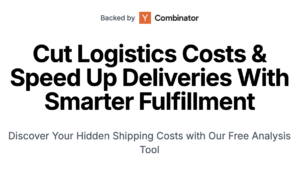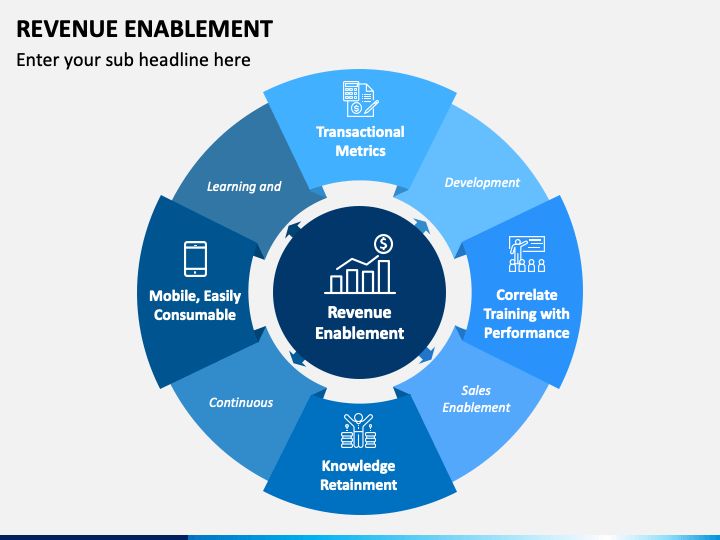RevSpire: Fueling Business Growth Through Data-Driven Sales Enablement Metrics
by RevSpire Team on September 04
Sales enablement is the backbone of modern business growth strategies. It’s the key to enhancing sales team performance, but to truly master it, you need more than just a one-size-fits-all approach. You need metrics tailored to your unique business needs. In this comprehensive guide, we’ll delve deep into the world of sales enablement metrics, helping you identify and leverage the most impactful ones to drive your business forward. With RevSpire by your side, you can turn data into actionable insights and unlock your full potential.
Deciphering Sales Enablement Metrics: A Foundation for Success
Sales enablement metrics are your compass in the world of sales. They are the data points that illuminate the path to improved performance. By analyzing these metrics, you can uncover valuable trends, strengths, and weaknesses within your sales processes and team dynamics. It’s a data-driven journey towards a more efficient and successful sales strategy.
Charting Your Course: How to Identify, Benchmark, and Analyze
Before diving into the vast sea of data, you must chart your course carefully. Here’s your guide:
- Set Clear Objectives: Begin by defining your sales enablement objectives. These goals should directly align with your primary business objectives, such as boosting seller productivity, shortening sales cycles, improving customer engagement, or increasing deal sizes.
- Select Relevant Metrics: Identify the metrics that closely align with your defined objectives. These metrics should be influenced by your sales enablement initiatives and provide meaningful insights into your progress.
- Establish Benchmark Metrics: Before initiating any changes, establish a baseline by measuring your current metrics and key performance indicators (KPIs). This baseline will serve as a reference point for tracking progress and measuring the impact of your sales enablement initiatives.
- Set Achievable Targets: Determine realistic and attainable targets that your sales team can reasonably achieve. These targets should serve as motivation and guide your team’s efforts.
- Data Analysis: Continuously monitor and analyze the collected data for trends, both positive and negative. Regular data analysis provides insights into the effectiveness of your initiatives.
- Adapt and Refine: Based on the data analysis, be prepared to make adjustments to your initiatives. If something isn’t working as expected, consider refining your strategies for better results.
- Share Insights: Foster collaboration within your team by sharing the results and insights from your metrics analysis. Celebrate successes and collaborate to identify areas for improvement.
- Communication is Key: Regularly communicate these metrics with stakeholders and team members to maintain alignment and drive collective efforts toward your sales enablement objectives.
- Celebrate Successes: Recognize and celebrate your team’s achievements and milestones. Positive reinforcement can boost motivation and drive continued success.
- Feedback Loops: Create feedback loops that allow team members to share their insights and suggestions based on the metrics. This promotes a culture of continuous improvement.
- Iterate and Evolve: Sales enablement is an ongoing process. Continuously iterate and evolve your strategies based on the evolving market dynamics and customer requirements.
- Benchmark Against Industry Standards: Compare your metrics to industry benchmarks to gain a better perspective on your performance and identify areas where you can excel.

Balancing Act: Qualitative vs. Quantitative Metrics
To gain a comprehensive understanding of your sales performance, you need to consider both qualitative and quantitative metrics. Here’s how they complement each other:
Qualitative Metrics: These stem from personal opinions, experiences, and observations. They offer valuable insights, often anecdotal, but are crucial for identifying areas for improvement.
Quantitative Metrics: These are concrete, measurable numbers. They support data-driven decision-making, providing a clear picture of sales performance.
RevSpire’s 20 Essential Sales Enablement Metrics
Now, let’s explore the top sales enablement metrics you should be tracking to supercharge your business growth. RevSpire empowers you with the tools to monitor and harness these metrics effectively.
- Time to Productivity Reimagined: Measure the time it takes for new sales reps to reach peak performance, combining training, onboarding, shadowing, and hands-on experience.
- Content Engagement Analysis: Gauge how frequently sales representatives interact with sales enablement content and uncover which materials are most effective.
- Effectiveness of Sales Content: Evaluate the utilization of sales enablement content and its impact on closing deals, ensuring your content strategy aligns with sales goals.
- Shortening the Sales Cycle: Monitor the average time it takes for sales reps to convert prospects from initial contact to closed deals to refine your sales targets and resource allocation.
- Win Rate Insights: Determine the percentage of successful deals and unearth trends in sales processes, high-performing sellers, and areas for improvement.
- Quota Attainment Mastery: Track the percentage of sales reps meeting or exceeding their sales targets, identifying coaching needs and top performers.
- Individual Sales Rep Revenue: Measure the average revenue generated by each sales rep during specific periods to identify and reward high performers.
- Customer Retention Rate Excellence: Analyze the proportion of retained customers over defined periods, highlighting the impact of customer satisfaction on business health.
- Upselling Proficiency: Calculate the percentage of existing customers who engage in upsells, optimizing your upsell offerings and pricing strategies.
- Seller Satisfaction Insights: Qualitatively assess sellers’ job satisfaction, training, resources, and work environment through surveys and feedback.
- Turnover Rate Assessment: Evaluate the percentage of sales reps leaving the company during specific periods, pinpointing satisfaction-related issues and successes.
- Revenue by Product Dynamics: Measure the total revenue generated from specific products or product categories to inform product strategies.
- New Business Revenue Share: Calculate the percentage of total revenue attributed to new customers, refining your new customer acquisition strategies.
- Year Over Year Growth Analysis: Assess the percentage increase in revenue (or customer numbers) from one year to the next to gauge growth momentum.
- Existing Customer Revenue Contribution: Measure the proportion of total revenue derived from existing customers through repeat add-on sales and services.
- Net Promoter Score (NPS): Evaluate customer loyalty and advocacy through the NPS scale, gauging the likelihood of referrals.
- Market Penetration Insights: Determine the percentage of the total potential market your company has captured, aiding future growth planning.
- Customer Lifetime Value (CLV): Calculate the total expected revenue from a single customer throughout their relationship with your company.
- Customer Acquisition Cost (CAC): Quantify the total cost of acquiring new customers, shedding light on the cost-effectiveness of your acquisition efforts.
- Average Selling Price (ASP): Assess the average amount a customer spends per contract or product to optimize pricing strategies.
The Three P’s of Sales Enablement Metrics: Performance, Proficiency, and Productivity
Sales enablement metrics fall into three primary categories, known as the Three P’s:
- Performance Metrics: Focused on sales outcomes, including win rate, quota attainment, revenue generated, and more.
- Proficiency Metrics: Assess the skills and competencies of your sales force, such as time to ramp, time to quota attainment, and competency improvement.
- Productivity Metrics: Monitor the efficiency of your sales reps and processes, including time spent on sales activities, lead conversion rate, and more.
Harness the Power of Data with RevSpire
Sales enablement metrics are your secret weapon for enhancing sales team performance, but they only come to life when you put them to work. RevSpire empowers you to make data-driven decisions, adapt to market dynamics, and achieve your business goals. With RevSpire, you have a partner that not only provides valuable insights but also helps you turn them into action.
Unlock your full potential with RevSpire and revolutionize your sales enablement strategy. Don’t just collect data; harness it for business growth.
Book a demo with RevSpire today and let’s embark on a data-driven journey towards your business success.

By RevSpire Team
The RevSpire Team champions our sales enablement platform, empowering businesses to engage in more meaningful buyer conversations and hit revenue targets. RevSpire leverages AI-driven search, analytics, training, guided selling, and seamless integrations for a modern, user-friendly solution loved by sales reps and marketers.






